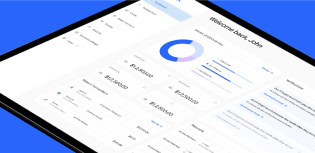How 3 companies used increased purchasing power to grow their businesses

Purchasing power is the heart of every business. After all, if you can’t buy the necessary materials to run your organization and serve customers, you won’t be able to function.
In the traditional sense, purchasing power equals how far your dollar goes. How much product can you buy with the money you have? Inflation and/or higher prices can decrease your purchasing power, while rising interest rates can increase purchasing power.
In this case, we are talking about purchasing power as it relates to your organization’s ability to make purchases. How do your executives, employees and even volunteers access funds to make purchases? What does that process look like?
At first glance, your purchasing process might seem trivial. But if employees can’t buy supplies required for their jobs in a timely manner, their work is delayed. Your company may struggle to serve existing customers, which limits your ability to take on new customers. There’s no opportunity for growth.
Purchasing power is table stakes for business growth. Let’s examine 3 real-life examples of businesses that expanded their purchasing power – and see how it helped them grow.
Southwestern Healthcare: converting petty cash to prepaid cards
Southwestern Healthcare (SH) serves the mental health needs of residents of Southwestern Indiana. In order to make purchases, SH’s 400+ employees had to submit requests for petty cash. Manual processes like paper forms and spreadsheets caused delays and errors. Processing requests at such a large scale delayed monthly reconciliation. And cash itself limited employees, since you can’t buy anything online with cash.
After the pandemic, SH replaced nearly all of their petty cash purchases with PEX Visa® Prepaid Cards. This move greatly improved efficiency for their accounting team. SH replaced manual expense reporting with automated receipt collection and transaction matching, which reduced errors and sped up reconciliation. And the prepaid card enabled SH employees to make purchases online, for things like food orders for group homes and field trips.
These improvements not only saved SH 10 hours per month on manual expense reporting – they also opened up room to grow by expanding existing programs and adding new ones.
Dogtree Pines: replacing out-of-pocket payments with corporate credit
DogTree Pines is a dog sanctuary for large senior dogs. Founder Cindy Lamont was initially putting organizational purchases on her personal credit card. Treasurer Terry Green came in and set up Aplos accounting software and a corporate credit card. These new additions helped manage the organization’s finances and separate Cindy’s personal transactions from Dogtree Pines’ purchases.
But it wasn’t enough. Cindy was the only one who could use the corporate card. Volunteers who took a dog to the vet or picked up medications, for example, had to pay out-of-pocket – if they had enough personal credit. Then they’d submit a reimbursement form and Dogtree Pines would cut them a check – a lengthy process that delayed reimbursements.
Terry decided to replace Cindy’s corporate card with the PEX Visa® Commercial Card. Cindy’s personal expenses were separated from sanctuary purchases, and the cards created critical spending controls for DogTree Pines.
But an even bigger benefit was the ability to generate cards for volunteers. Card access enabled them to spend for DogTree Pines without relying on personal funds, and grow the organization to include more community members who want to participate.
Wheelhouse Group: earning cash back to reinvest in the business
Brent Montgomery’s Wheelhouse Group creates tv, film and digital content. As the company took on more and more projects, they kept adding new Amex cards – topping out at 20. The Amex cards weren’t compatible with their accounting system, GreenSlate, causing a ton of manual work. And Amex didn’t offer any financial incentives for using the cards.
Brent made the move to PEX’s virtual cards to get rid of shipment delays for physical cards. The spend controls available with the PEX platform helped him keep purchases in scope. PEX’s dashboard gave him real-time visibility into project spending, and improved cash flow for the business. The finance team saved 4 hours per month on closing the books.
And bonus: just by using the card, his team earned 1% cash back – equal to $2,000 that the finance team could reinvest in the Wheelhouse Group.
Key takeaways for CFOs and finance leaders
Purchasing processes have a huge impact on your finance team, employees, volunteers – and your bottom line. When building or looking to refine purchasing processes, take these key issues into account.
- Evaluate the efficiency of your purchasing process. A slow or outdated purchasing process can create unnecessary bottlenecks for your team. If employees are waiting on approvals, relying on petty cash or using personal funds for company expenses, productivity takes a hit—and so does your bottom line.
Automating purchasing with the right tools not only saves time but also ensures spending stays in scope and is easy to track. The more efficient your purchasing process, the faster your team can focus on growth instead of paperwork.
- Consider staff input when determining payment options. For employees making purchases as part of their regular workload, it’s important to understand how purchasing processes affect them. The finance team might be fine with issuing petty cash for purchases because it gives them control. But requesting petty cash could be a huge pain for staff, contributing to lower productivity and decreased employee satisfaction. As you consider payment options, prioritize those that meet the needs of both parties.
- Assume the credit burden for all corporate purchases. Don’t rely on staff or volunteers to make purchases with their personal funds or credit line. It causes all kinds of problems, like reimbursement stress, late fees, embarrassment regarding lack of credit and a general sense of unfairness. Employees and volunteers should have the ability to make necessary purchases with company funds.
How PEX helps companies increase their purchasing power
One of the many benefits of automating expense management is increased purchasing power. At PEX, we help our customers convert manual, labor-intensive expense tracking to automated, efficient workflows. These workflows enable employees to make approved purchases faster, meet their customers’ needs and grow their businesses.
We’d love to learn more about your purchasing process and share how PEX’s automations can save you time and increase your purchasing power. Contact us for a customized demo.
Similar resources
Opinions, advice, services, or other information or content expressed or contributed here by customers, users, or others, are those of the respective author(s) or contributor(s) and do not necessarily state or reflect those of The Bancorp Bank, N.A. (“Bank”). Bank is not responsible for the accuracy of any content provided by author(s) or contributor(s).







